Epic Manaslu Trek Ultimate Guide with Detailed Intro, Variations and Tips
To cut down on the overall cost of your trip, consider opting for budget-friendly options. This might mean choosing less experienced trek leaders who can offer lower rates while still providing good guidance.
Manaslu Trek is based in Gorkha, a district in central Nepal. Situated on a hill that overlooks the majestic Himalayas, Gorkha is renowned for its shrine dedicated to Gorakhnath, the patron saint of the region. Additionally, the town is home to a temple devoted to the Hindu goddess Bhavani (Devi).
Geography of Manaslu Region
Manaslu trekking region, which is within Manslu Conservation Area Project(MCAP) is a mountainous natural heaven in northern part of Gorkha District, has a fragile but diverse natural resource base and a rich cultural environment. MCAP encompasses an area of 1,663 sq. km. covering Tsumnubri Rural Municapality’s seven wards, i.e., Sirdibas, Chumchet, Chhekampar, Bihi, Prok, Lho and Samagaun. The area can be broadly categorized into 3 geographical areas based upon the natural setting and ethnicity. The northwestern part of the MCA covering Samagaun, Lho and Prok wards, is called Nubri valley, and the middle area Bihi is Kutang. The northeastern area covers two wards Chumchet and Chhekampar is known as Tsum valley. Jagat village of Sirdibas is the main entrance to the MCAP. There are about 9,000 inhabitants living in MCA and over 2,000 species of plants, 39 mammals, 201 birds, 3 reptiles and 11 butterflies in 11 types of forest have been reported from the area.
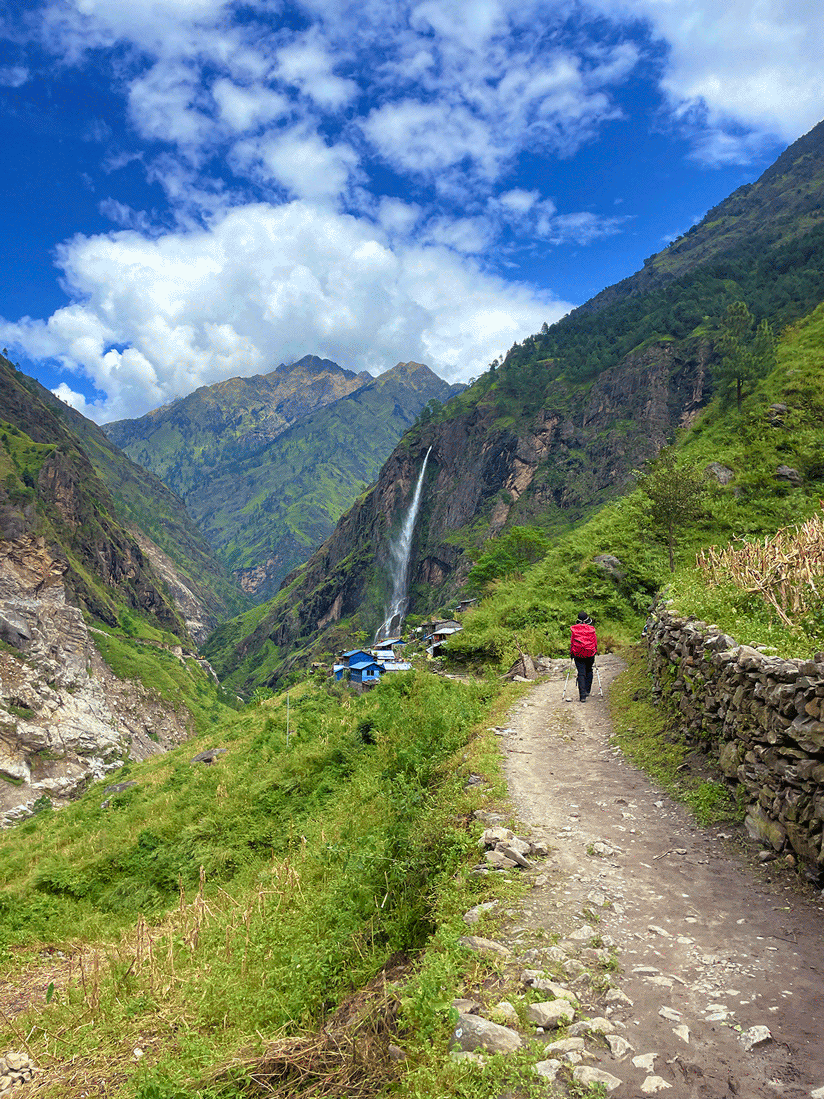
As you reach the alpine zone, found between 4000 and 5000 m, the landscape transitions to open meadows. The arctic zone begins at elevations above 4500 m, where the snow line is located at around 5000 m. Here, precipitation typically falls as snow, and temperatures plunge well below freezing. The monsoon season occurs from June to September, contributing approximately three-fourths of the region’s annual rainfall. The post-monsoon period, spanning October to November, along with the winter months of December to February, tends to be significantly drier. Overall, the average annual rainfall in this area is around 1900 mm. In general, the southern part of the region experiences cloudier and wetter conditions compared to the drier upper subalpine and alpine areas.
Culture and Lifestyle of the Manaslu Region
The culture of the region’s people is truly distinctive, with a majority of Tibetan origin who practice Buddhism. Economically, they depend heavily on agriculture and animal husbandry, as well as natural resources for firewood, timber, and medicinal plants. Many are also involved in trade and tourism-related businesses, especially those attracted to the scenic beauty and cultural richness along the Manaslu Circuit Trek. However, agricultural production is quite limited due to factors like restricted arable land, a lack of irrigation, prolonged low temperatures, and insufficient rainfall. The area’s rich cultural heritage is showcased by several prominent Buddhist monasteries, such as Shringi Gompa in Bihi, along with Mu and Rachen Gompas located in Chhekampar, which are often highlights for trekkers on the Manaslu Circuit Trek. Throughout the region, one can observe the harmonious relationship between religion and environmental conservation, as local Lamas (religious leaders) from these monasteries advocate against any form of violence towards wildlife.
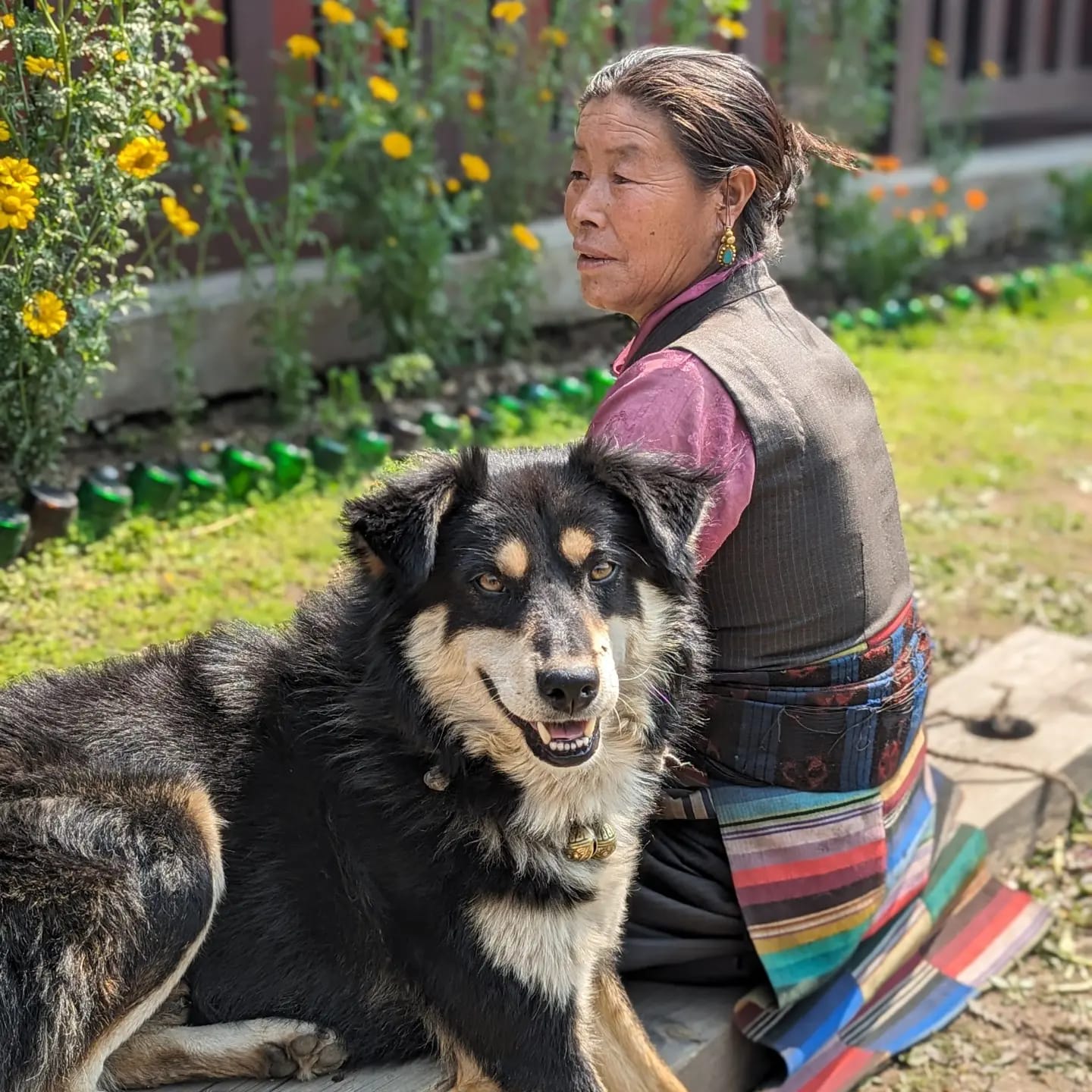
A pride-filled experience of getting connected with the motherland of the world’s fiercest warriors during your Manaslu Circuit Trek. The ancestral home of Nepal’s ruling dynasty, Gurkha, was taken over in 1559 by Drabya Shah, the younger son of the king of Lamjung(Another District connected to Gorkha), who went on to found his own kingdom. His descendant, Prithvi Narayan Shah, formed a diverse military force known as the Gurkhas (About Gurkhas). Starting in the mid-1800s, the British heavily recruited these troops, and since 1947, a significant number of Gurkhas have served in the Indian army.
Climate of Manaslu Region
The Manalsu region, stretching from Arughat to Larkhe La (Pass), showcases six distinct climatic zones: tropical, subtropical, temperate, subalpine, alpine, and arctic. The dramatic variations in climate along the 100 km trail between Arughat and Samdo arise from significant differences in elevation, topography, and precipitation levels. The tropical climate can be found in the low river basins of the Budhi Gandaki, Marsyangdi, and other nearby rivers, as well as in the lowland valleys and lower hills below an elevation of 1000 meters. As you move higher, a subtropical zone exists between 1000 m and 2000 m, where summer temperatures typically range from 31 to 34°C and winter temperatures hover between 8 and 13°C.
Above 2000 m and up to 3000 m lies the temperate zone, where summer temperatures are pleasantly mild, ranging from 22 to 25°C, while the winters can be chilly, with temperatures dropping between -2 and 6°C. Frosts and snowfall are quite common during the winter months of January and February. The subalpine zone, situated between 3000 m and 4000 m, experiences snowfall for about four to six months each year, from December to May. Winters are notably cold in this region, and even summer temperatures remain cool, averaging between 6 and 10°C.
Explore the Majesty, Ultimate Manaslu Trek Itinerary Variations :
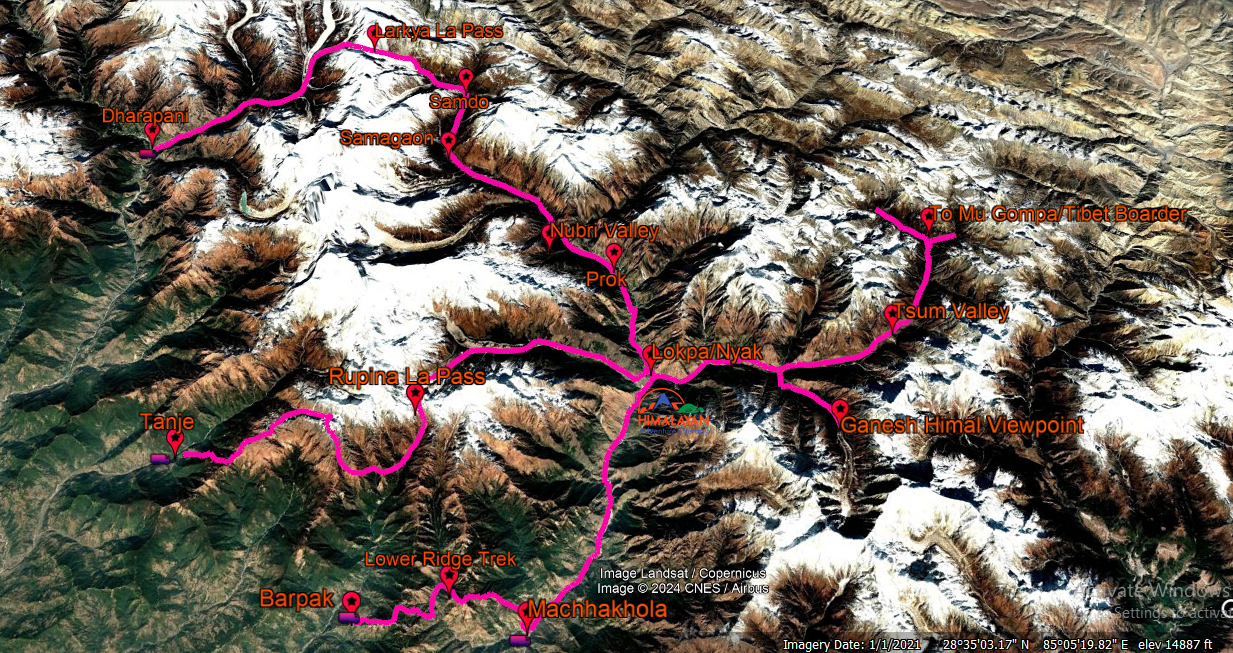
1) Around Manaslu Trek Via Larkya La Pass with Nubri valley and Ancient Villages 15 Days
Day 1: Arrival in Kathmandu (1,290 to 1,400 m) and transfer to designated hotel.
Day 2: Drive to reach Machhakhola (820 to 870 m), long but scenic Himalayan countryside driveway, stay overnight.
Day 3: Begin trekking from Machhakhola to Jagat (1,300 to 1,380 m), first trek day in the Manaslu region.
Day 4: Trek to Nyak (2,280 to 2,300 m), Budigandaki riverside walk to reach this small but ancient local settlement.
Day 5: Trek to Prok Village (2,360 to 2,420 m), via upper trail, an ancient village of locals, believed to be the chair of Guru Rinpoche. (1 day addition option for side trip to Kaal Taal) .
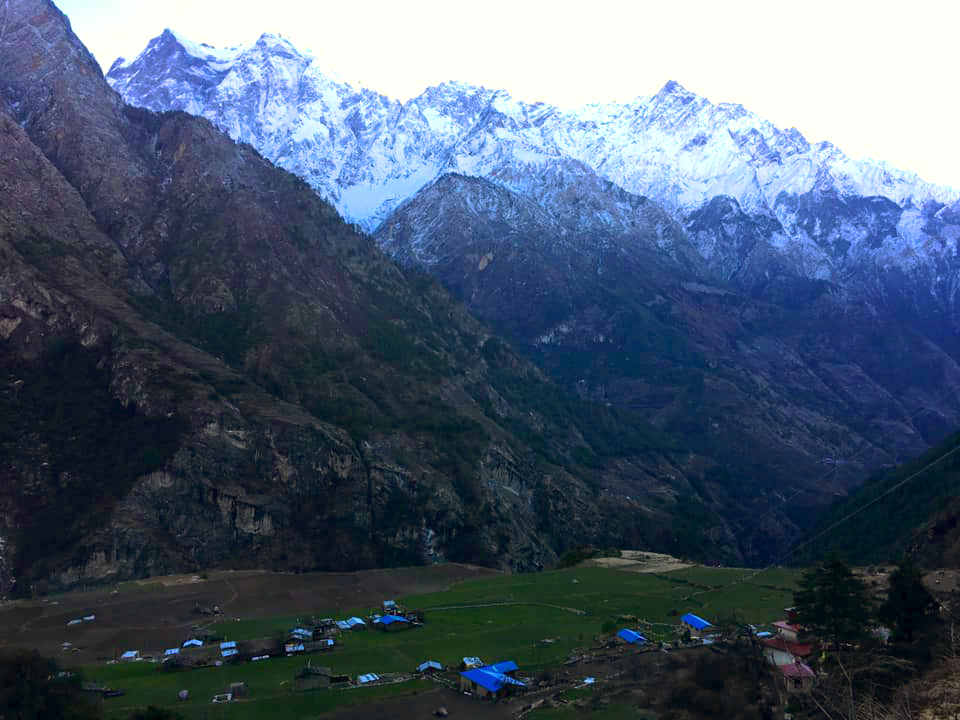
Day 6: Trek to Namrung (2,600 to 2,650 m), scenic walk through the Budigandaki riverside and village of Lho.
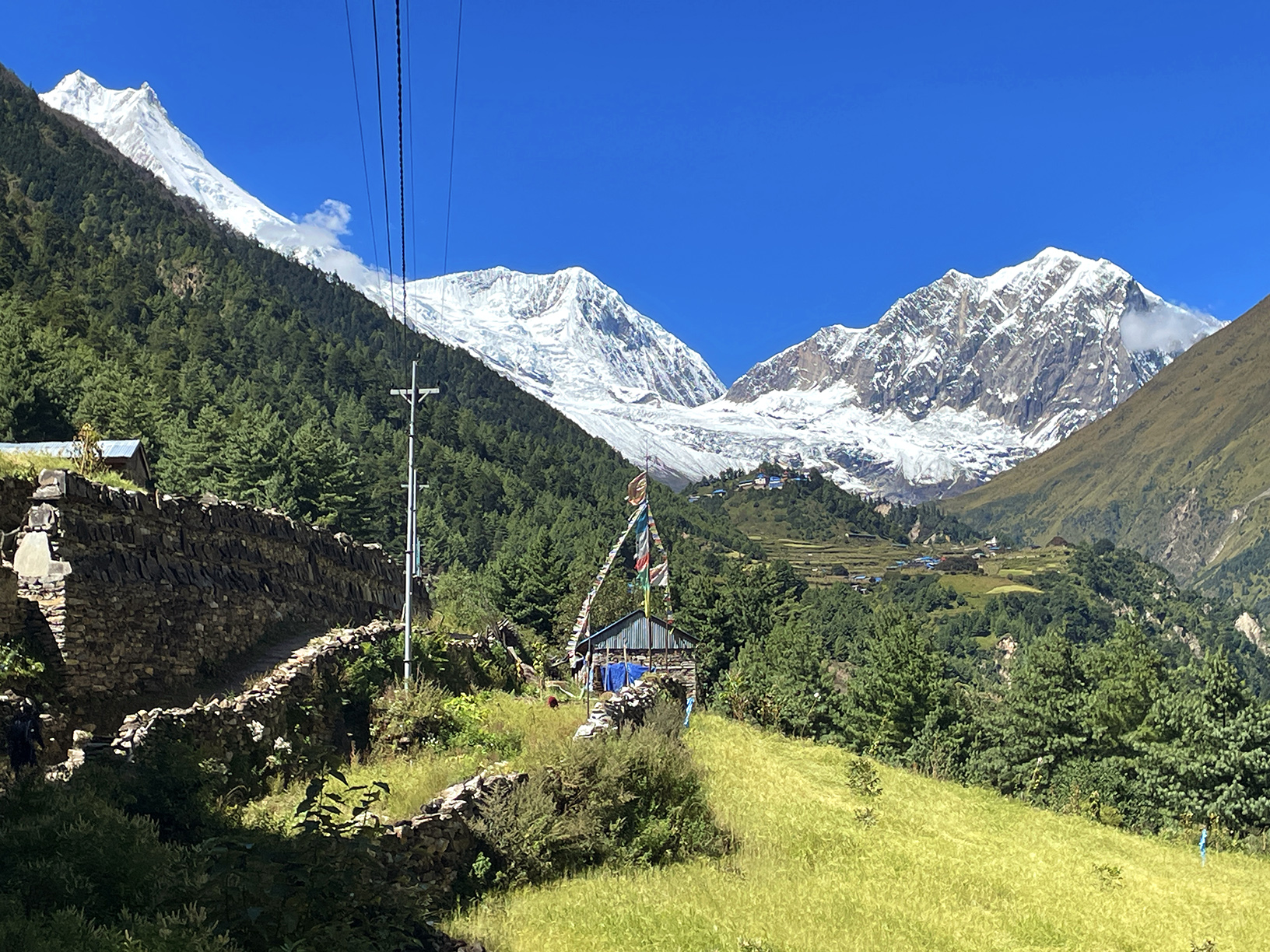
Day 7: Trek to Shyala (3,490 to 3,535 m), a little harder yet rewarding walk to Shyala, one of the best viewpoints on trek.
Day 8: Short trek to Samagaon (3,500 to 3,560 m) and explore Birendra Lake, Manaslu Base Camp, short and easy trek to Sama from Shyala. Explore Birendra Lake, Manaslu Base Camp.
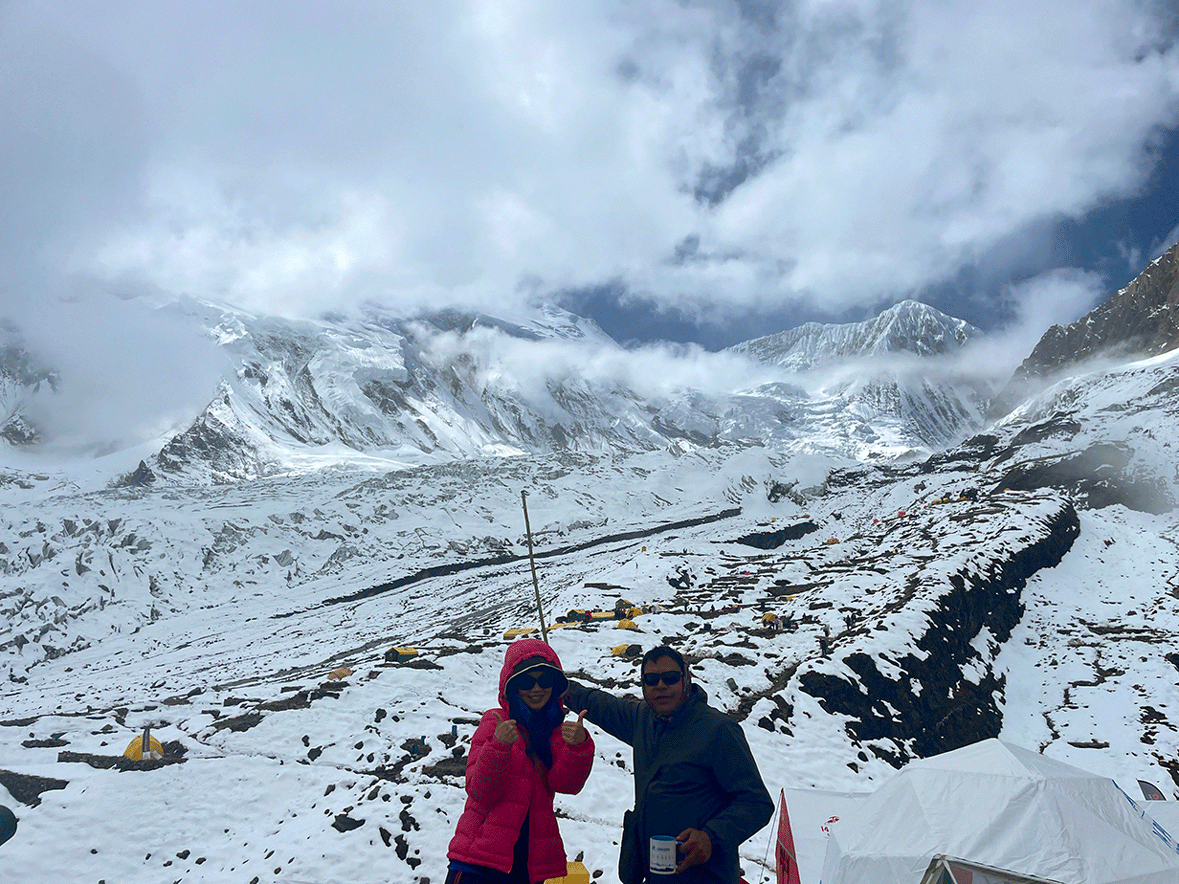
Day 9: Trek to Samdo (3,850 to 3,880 m), high altitude trek to Samdo, for an amazing view of the paradise-like mountain village of Samdo.
Day 10: Trek to Dharamsala (4,470 to 4,475 m) and rest, trek through glacial or rocky trail to reach Dharamsala.
Day 11: Trek to Bimthang (3,710 to 3,715 m) via Larkya La or Larke Pass (5,143 m), the most awaited day, crossing one of the highest mountain passes in the world.
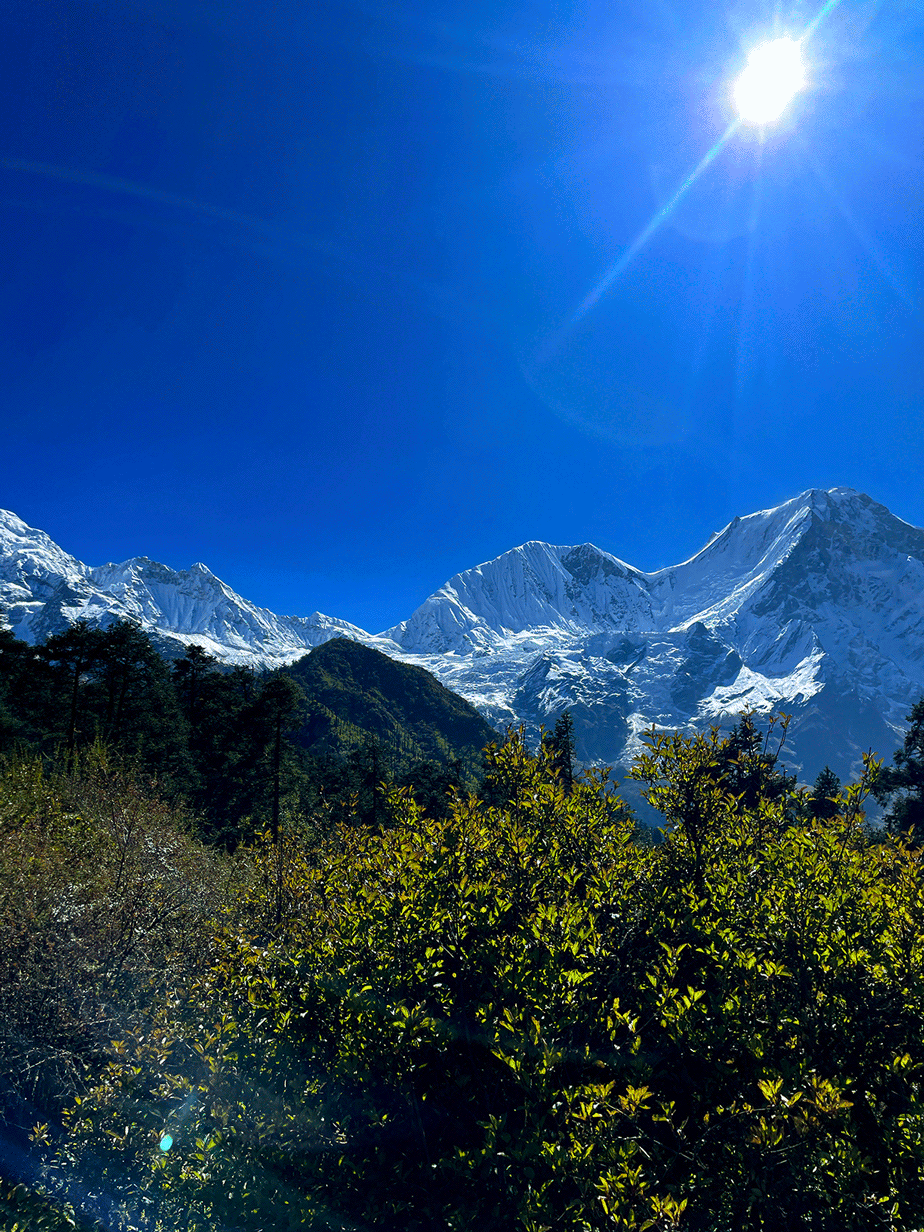
Day 12: Trek to Goa (2,520 to 2,540 m), descend down through an easy-to-walk trail to Goa or Gho.
Day 13: Trek to Dharapani (1,880 to 1,930 m), trek down to the last mountain stay of this trip.
Day 14: Drive back to Kathmandu.
Day 15: Final departure from Kathmandu, leave for your home country.
2) Manaslu Circuit Trek via Rupina La pass and Larkya La pass 17 Days
Day 1: Arrival in Kathmandu (1,290 to 1,400 meters) and transfer to designated hotel.
Day 2: Drive to reach Tanje Village (1,600m), long but scenic Himalayan countryside driveway.
Day 3: Begin trekking from Tanje to reach Gothkharka (3,935m). The Gothkharka is a mobile cattle farm of the local people, and the area is used for our camping, still unspoiled.
Day 4: Trek from Gothkharka to Dudhpokhari (4,600m). The out-of-the-world feeling comes with such comfort in those environments.
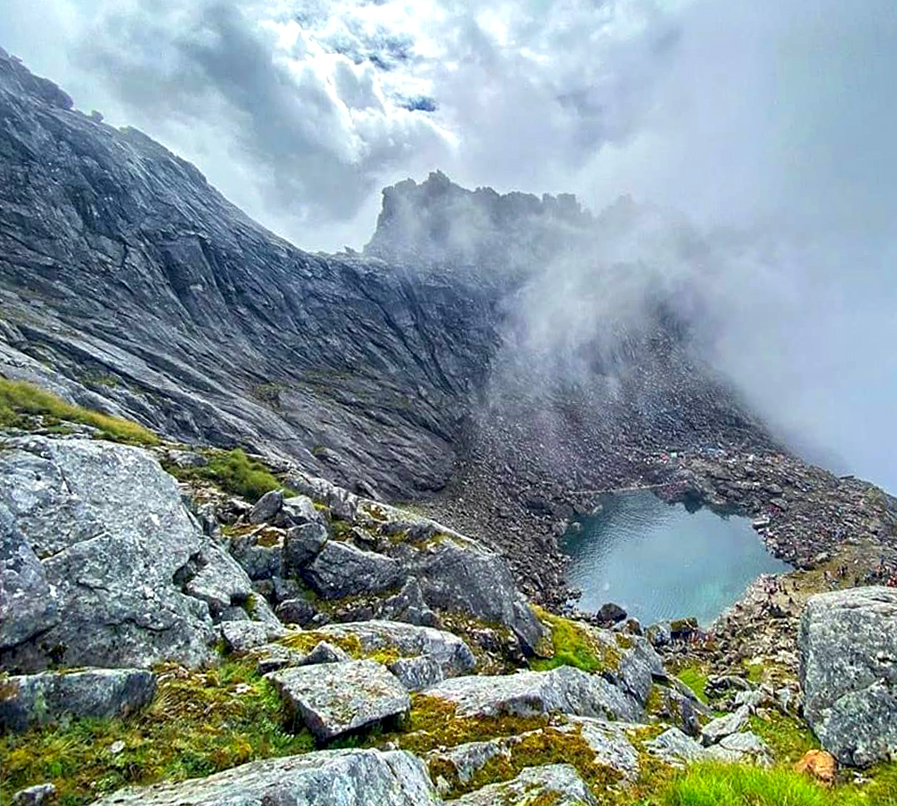
Day 5: Trek to Rupinala Phedi (3,400m), one day before we cross the antiquely famous Rupina La Pass.
Day 6: Trek to Zhong Kharka (2,860m) via Rupina La Pass (4,870m) for the view of a series of Himalayan ranges right in front of you.
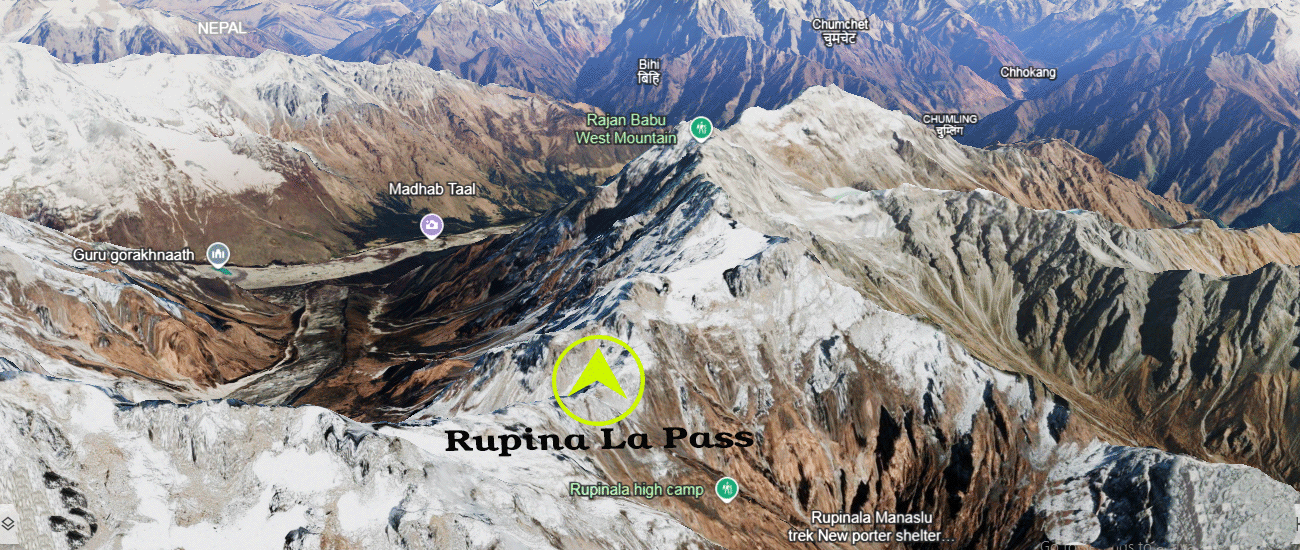
Day 7: Trek to Prok Village (2,360 to 2,420m) via the upper trail, an ancient village of locals believed to be the chair of Guru Rinpoche. (1-day addition option for side trip to Kaal Taal)
Day 8: Trek to Namrung (2,600 to 2,650m), scenic walk through the Budigandaki riverside.
Day 9: Trek to Shyala (3,490 to 3,535m), a little harder yet rewarding walk to Shyala, one of the best viewpoints on the trek.
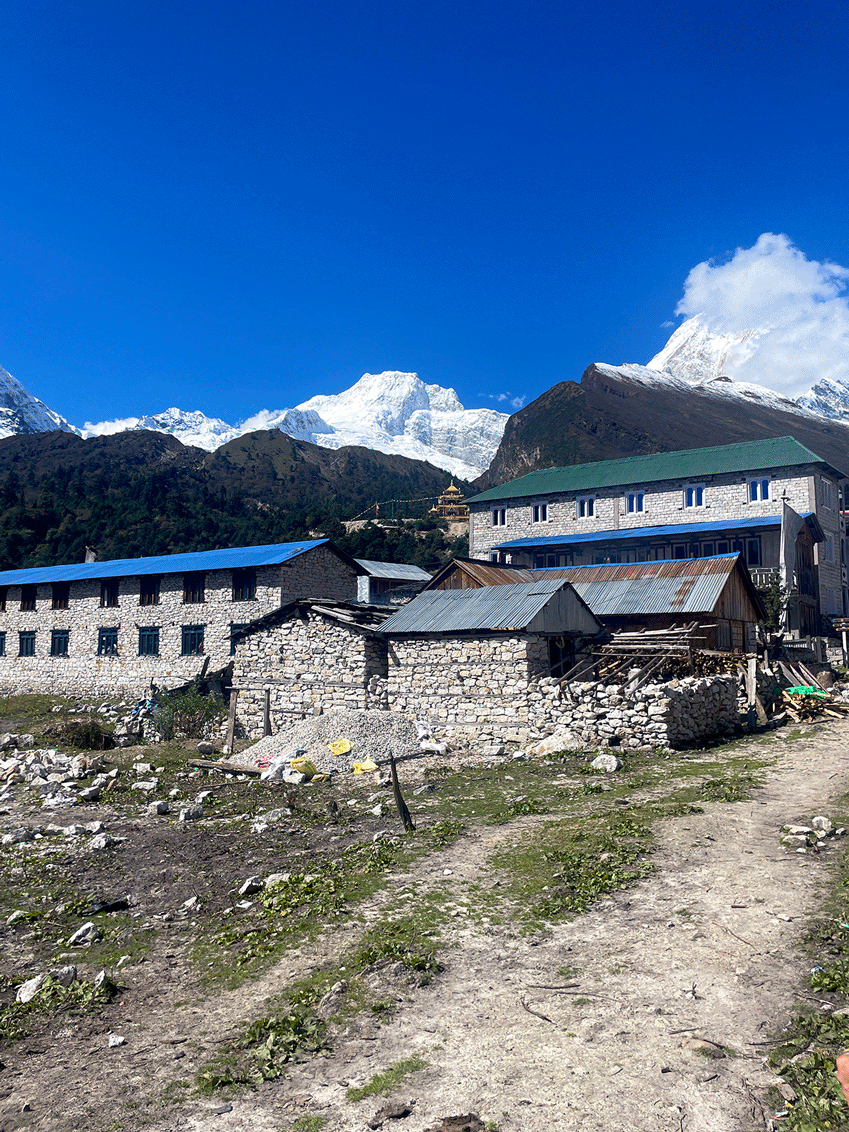
Day 10: Trek to Samagaon (3,500 to 3,560m) and explore Birendra Lake, Manaslu Base Camp. Short and easy trek to Sama from Shyala. Explore Birendra Lake, Manaslu Base Camp.
Day 11: Trek to Samdo (3,850 to 3,880m), high altitude trek to Samdo for an amazing mountain view.
Day 12: Trek to Dharamsala (4,470 to 4,475m) and rest. Trek through the glacial trail to reach Dharamsala.
Day 13: Trek to Bimthang (3,710 to 3,715m) via Larkya La or Larke Pass (5,143m), the most awaited day, crossing one of the highest mountain passes in the world.
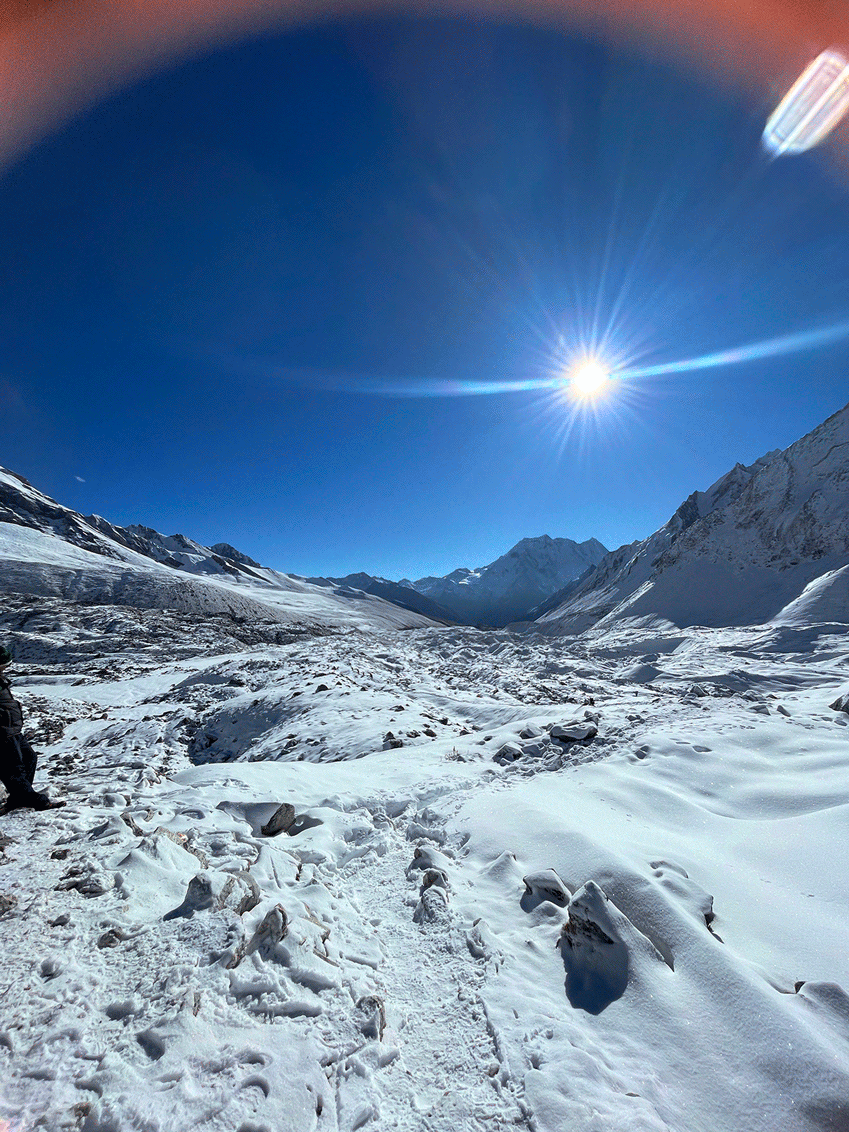
Day 14: Trek to Goa (2,520 to 2,540m), descend down through an easy-to-walk trail to Goa or Gho.
Day 15: Trek to Dharapani (1,880 to 1,930m), trek down to the last mountain stay in Dharapani.
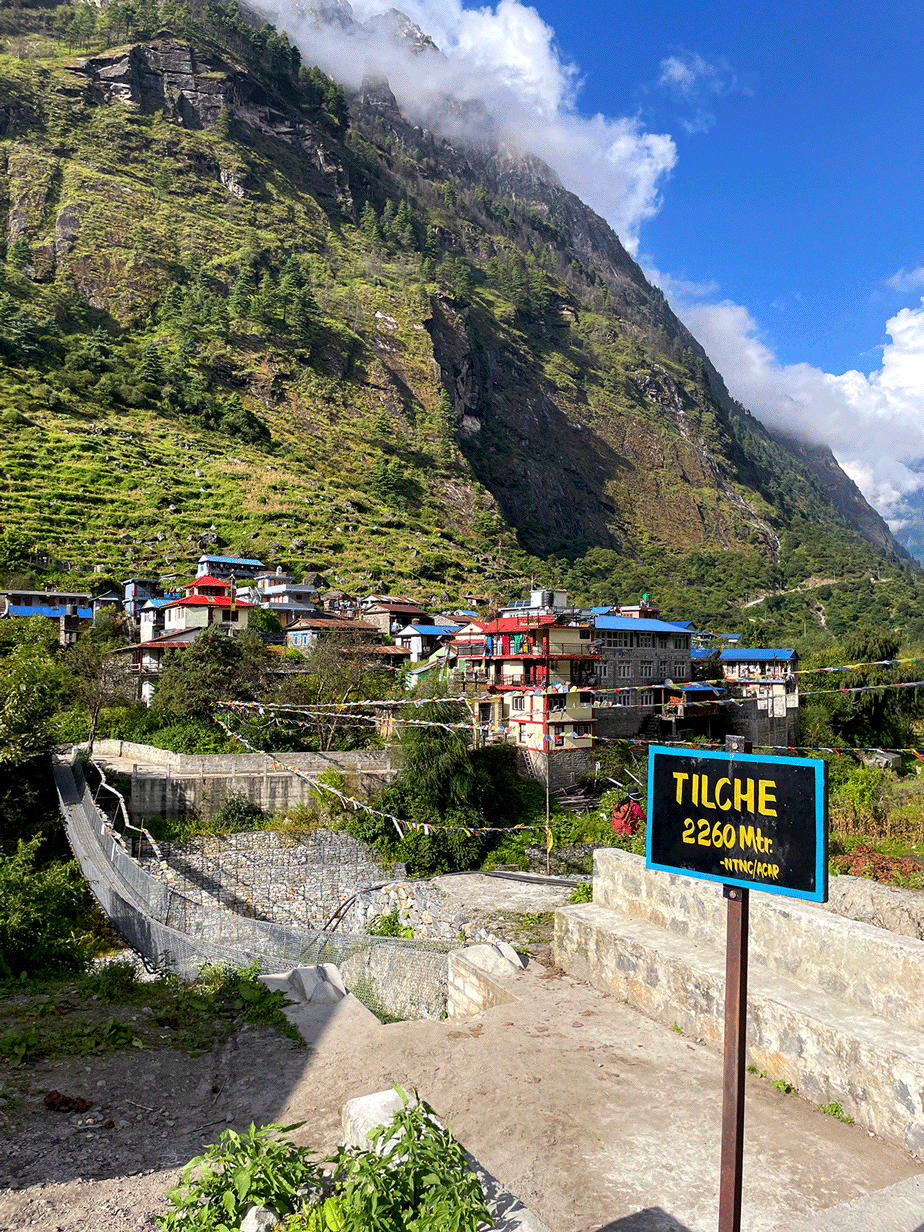
Day 16: Drive back to Kathmandu.
Day 17: Final departure from Kathmandu, leave for your home country.
3) Manaslu Circuit Trek and Tsum Valley Adventure with Ancient Gompa Wonders 23-Day
Day 1: Arrival in Kathmandu (1,290 to 1,400 m) and transfer to designated hotel.
Day 2: Drive to reach Machhakhola (820 to 870 m), long but scenic Himalayan countryside driveway, stay overnight.
Day 3: Begin trekking from Machhakhola to Jagat (1,300 to 1,380 m), first trek day in Manaslu region.
Day 4: Trek from Jagat to Lokpa (2,240 m). The Budigandaki river valleys house ancient local civilizations, trails, and their Gompas.
Day 5: Lokpa to Chumling (2,386 m). Another day at the scenic Tsum valley area overlooking Ripchet village in the foreground.
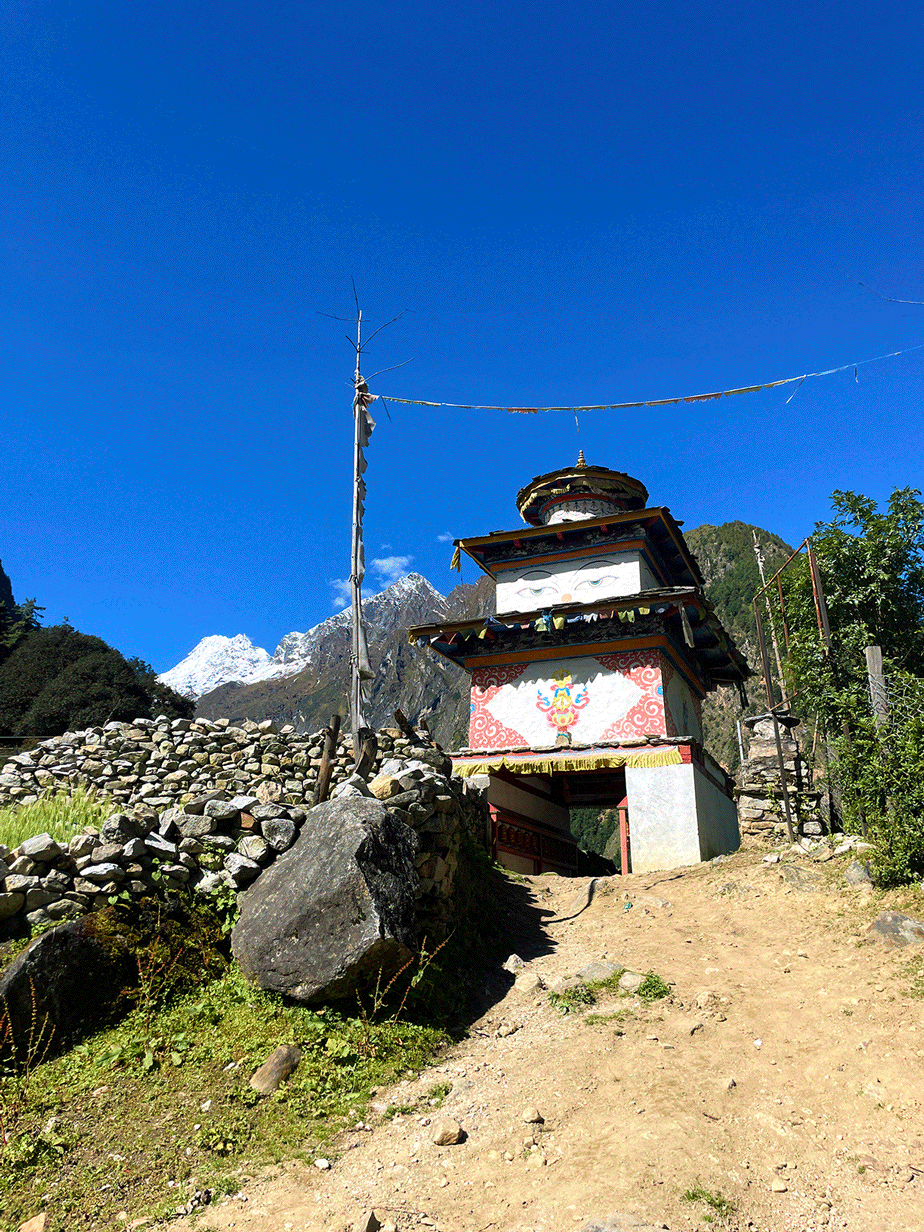
Day 6: Trek from Chumling to Chekampar (3,031 m), beautiful village placed in a narrow valley.
Day 7: Trek from Chekampar to Lamabagar (3,361 m) and visit beautiful monasteries.
Day 8: Stay in Lamabagar and perform a side trip to Piren Phu Cave, Rachen Gumba, and Leru Waterfall.
Day 9: Trek to Mu Gompa and rest at Nile (3,700 m).

Day 10: Trek back from Nile to Chekampar (3,031 m).
Day 11: Trek from Chekampar to Chumling (2,386 m).
Day 12: Trek from Chumling to Deng (1,860 m).
Day 13: Trek from Deng to Prok Village (2,360 to 2,420 m), via upper trail, an ancient village of locals, believed to be the chair of Guru Rinpoche (Approx. 13.5 km walk). Optional camping extension to Serang Gumba or Kaal Taal.
Day 14: Trek to Namrung (2,600 to 2,650 m), scenic walk through the Budigandaki riverside (Approx. 9.5 km walk) + Namla Gompa and old age house at Hukum near the Gompa.
Day 15: Trek to Shyala (3,490 to 3,535 m), a little harder yet rewarding walk to Shyala, one of the best viewpoints on the trek (Approx. 12 km walk) + Hinang Monastery + Buddhist temple in Sho village below Lho + Ribum Monastery.
Day 16: Trek to Samagaon (3,500 to 3,560 m) and explore Birendra Lake, Manaslu Base Camp or via Pung Gyen Gompa. Short and easy trek to Sama from Shyala. Explore Birendra Lake, Manaslu Base Camp or choose a challenging trail via Pung Gyen Gompa + HangSangFu Meditation Center + Nubri Pema Decho Ling Monastery.
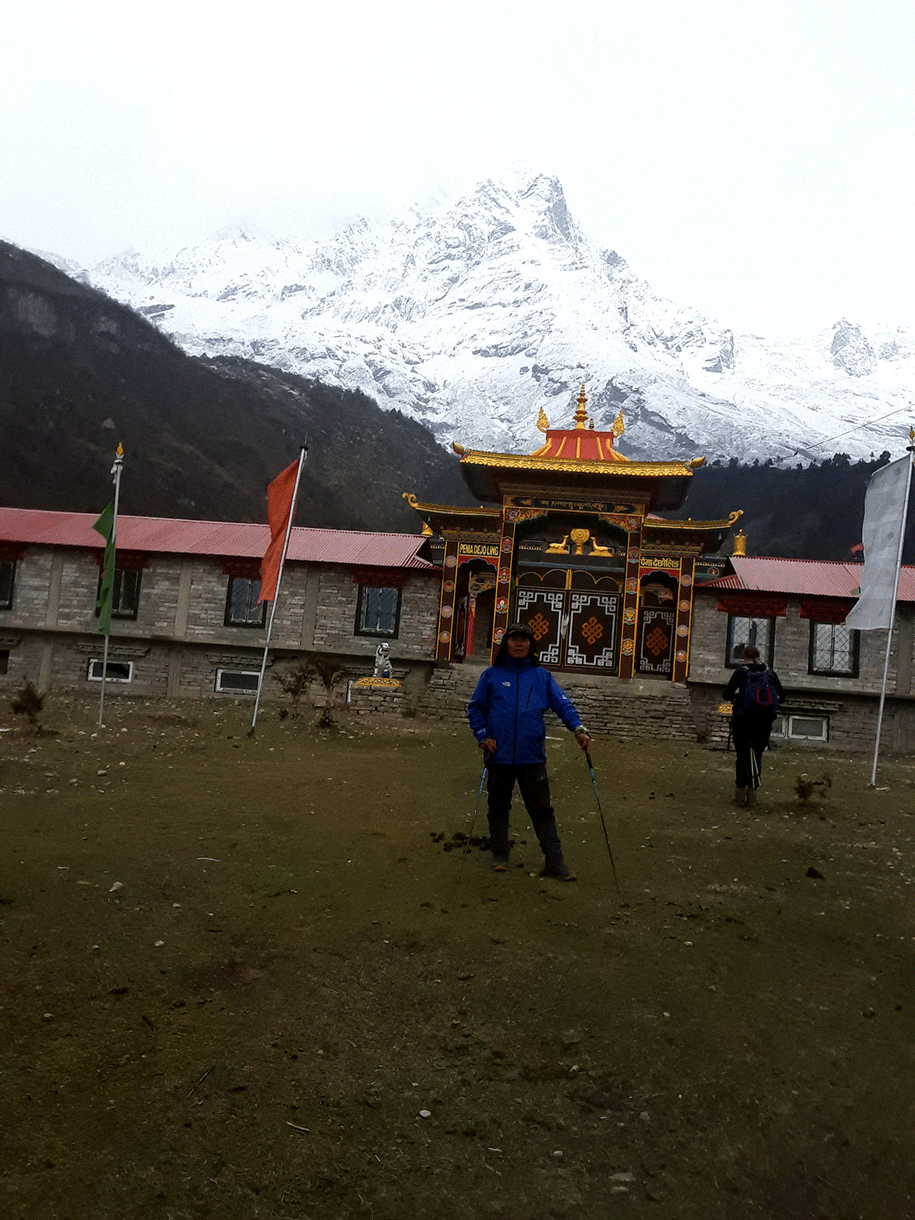
Day 17: Trek to Samdo (3,850 to 3,880 m), high altitude trek to Samdo for amazing mountain view (Approx. 8 km walk).
Day 18: Trek to Dharamsala (4,470 to 4,475 m) and rest, trek through glacial trail to reach Dharamsala (Approx. 6.5 km walk).
Day 19: Trek to Bimthang (3,710 to 3,715 m) via Larkya La or Larke Pass (5,143 m), the most awaited day, crossing one of the highest mountain passes in the world (Approx. 14.5 km walk).
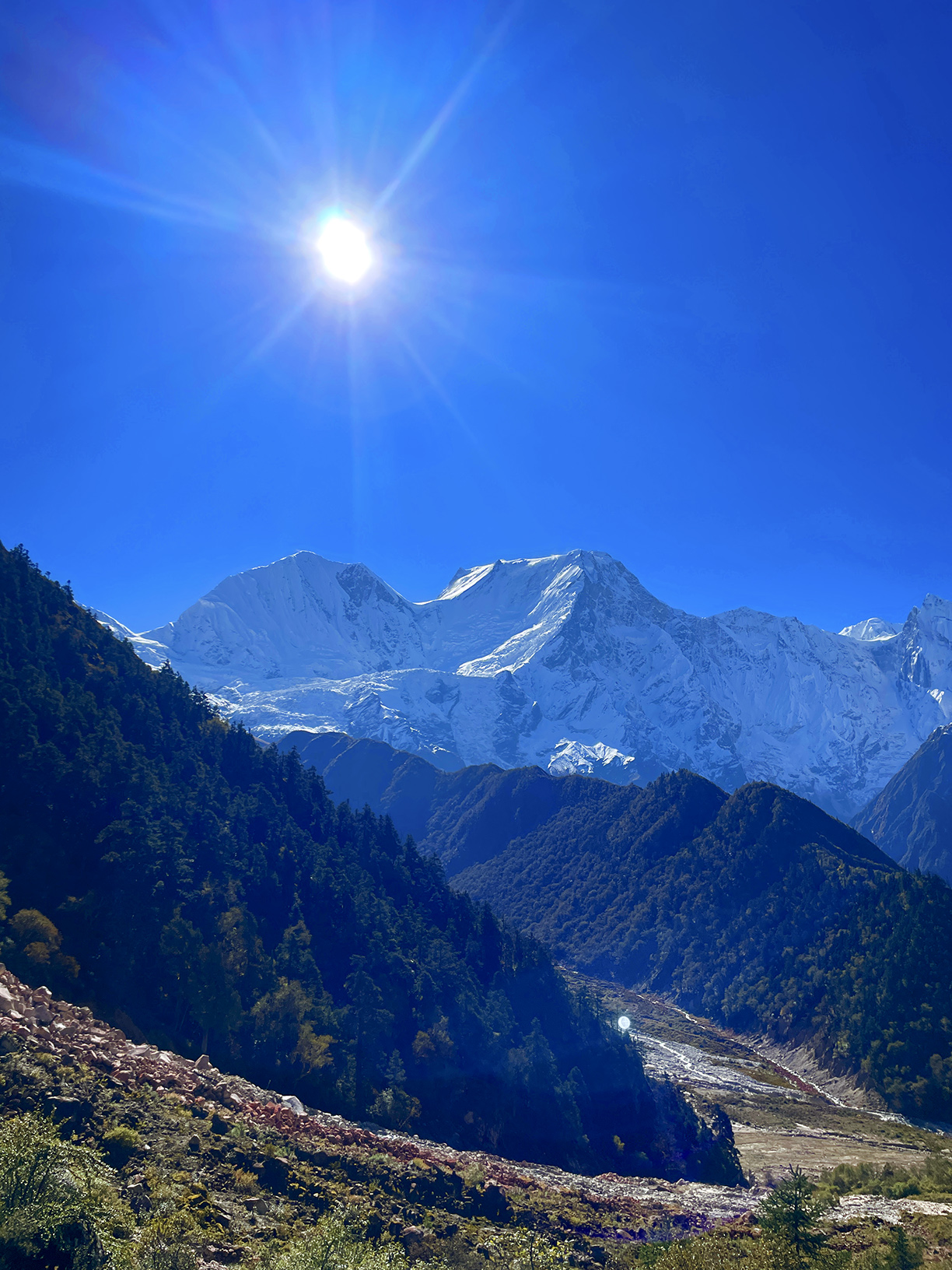
Day 20: Trek to Goa (2,520 to 2,540 m) after admiring yet another magnificent view of the Himalayas at Bimthang area. Ascend down through an easy to walk trail to Goa or Gho (Approx. 15 km walk).
Day 21: Trek to Dharapani (1,880 to 1,930 m), trek down to the last mountain stay in Dharapani (Approx. 7.5 km walk).
Day 22: Drive back to Kathmandu (Approx. 218 km drive).
Day 23: Final departure from Kathmandu, leave for your home country.
4) Manaslu Circuit Trek via Ganesh Himal Base Camp & Tsum Valley 24 Days
Day 1: Arrival in Kathmandu (1,290 to 1,400 m) and transfer to the designated hotel.
Day 2: Drive to reach Machhakhola (820 to 870 m), a long but scenic Himalayan countryside drive, stay overnight.
Day 3: Begin trekking from Machhakhola to Jagat (1,300 to 1,380 m), the first trek day in the Manaslu region.
Day 4: Trek from Jagat to Lokpa (2,240 m). The Budigandaki river valleys house ancient local civilizations, trails, and their Gompas.
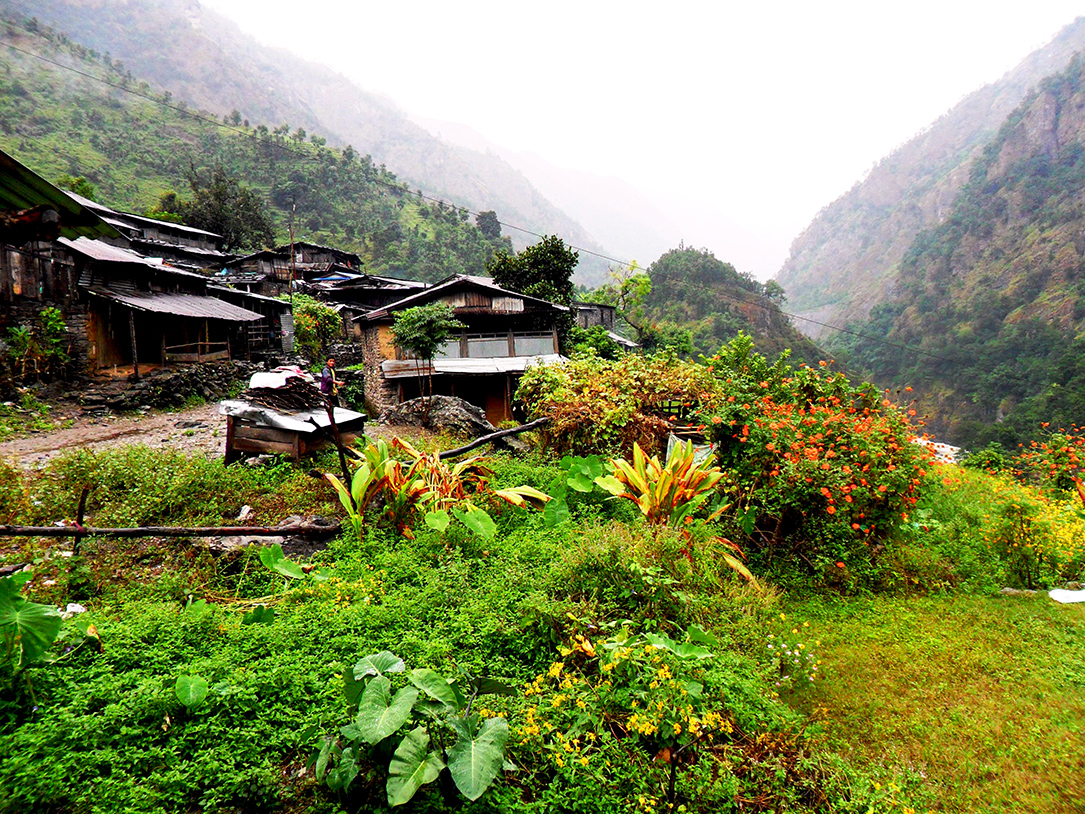
Day 5: Lokpa to Chumling (2,386 m). Another day in the scenic Tsum Valley area overlooking Ripchet village in the foreground.
Day 6: Chumling to Tumje (2,470 m). A rare junction of 4 giant hills marks the end point, peaceful and calm Tumje Village.
Day 7: Day trip from Tumje to Ganesh Himal Base Camp (II) via Gompa Longdang, caravan route, and back to Tumje for an overnight stay. View of Ganesh Himal V and Ganesh Himal North West is seen from the base camp area along with other Himalayan ranges surrounding it at an elevation of 3,939 meters.
Day 8: Trek from Tumje to Lamabagar (3,361 m). The trail in this scenic mountain valley will take you through beautiful local farm areas, beautifully placed within.
Day 9: Stay in Lamabagar and perform a side trip to Piren Phu Cave, Rachen Gumba, and Leru Waterfall. Enjoy your day at the heart and main attraction of the Tsum Valley region.
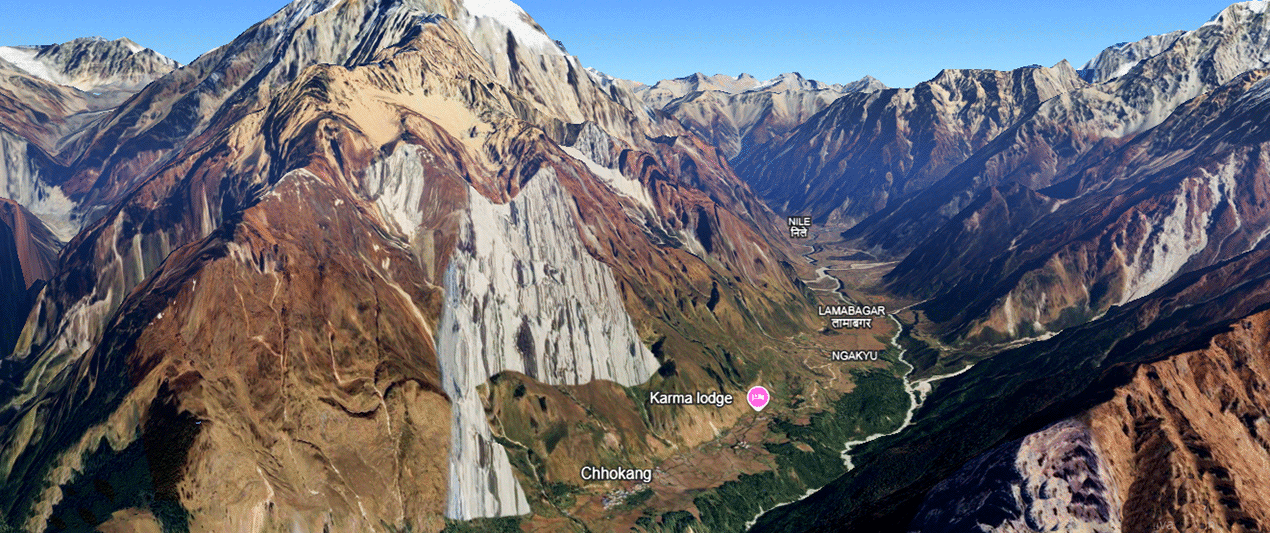
Day 10: Trek to Mu Gompa and rest at Nile (3,700 m). The ending point of ascent.
Day 11: Trek from Nile to Chekampar (3,031 m). A scenic and traditional village of Tsum Valley.
Day 12: Chekampar to Chumling (2,386 m). The end of Tsum Valley village settlement.
Day 13: Trek down from Chumling to Deng (1,860 m).
Day 14: Trek from Deng to Prok Village (2,360 to 2,420 m), via the upper trail, an ancient village of locals, believed to be the chair of Guru Rinpoche (approx. 13.5 km walk). Optional camping extension to Serang Gumba or Kaal Taal.
Day 15: Trek to Namrung (2,600 to 2,650 m), a scenic walk through the Budigandaki riverside (approx. 9.5 km walk).
Day 16: Trek to Shyala (3,490 to 3,535 m), a little harder yet rewarding walk to Shyala, one of the best viewpoints on the trek (approx. 12 km walk).
Day 17: Trek to Samagaon (3,500 to 3,560 m) and explore Birendra Lake, Manaslu Base Camp, or via Pung Gyen Gompa. A short and easy trek to Sama from Shyala. Explore Birendra Lake, Manaslu Base Camp, or choose a challenging trail via Pung Gyen Gompa.
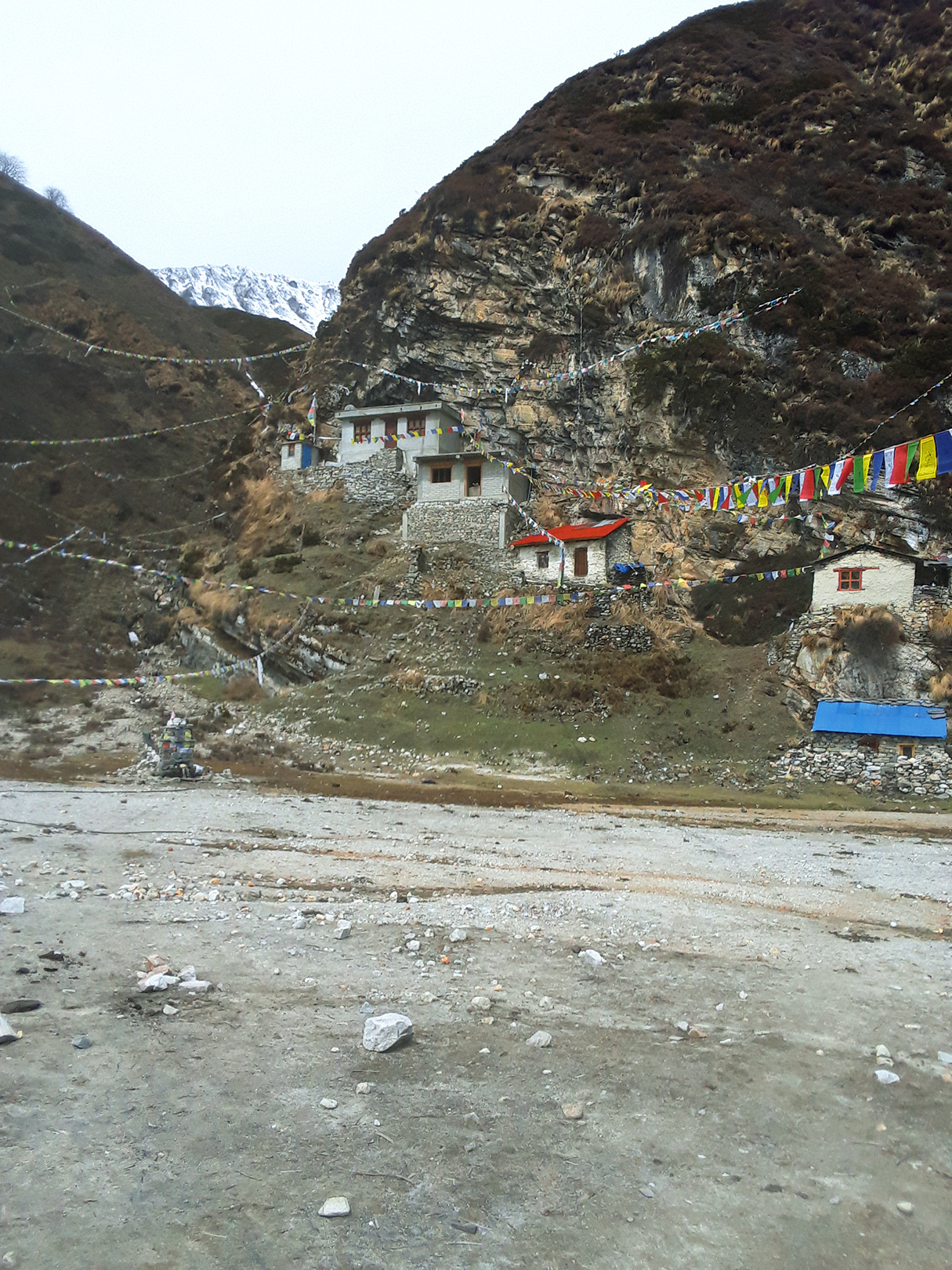
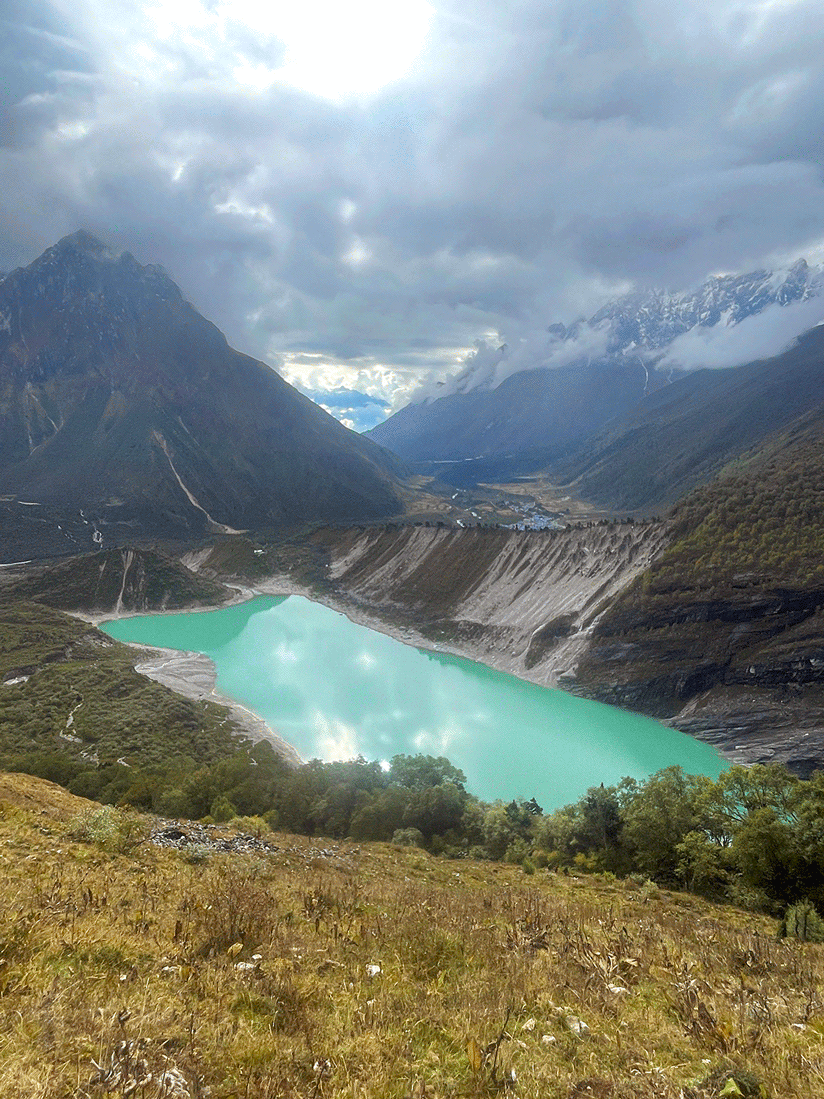
Day 18: Trek to Samdo (3,850 to 3,880 m), a high-altitude trek to Samdo for amazing mountain views (approx. 8 km walk).
Day 19: Trek to Dharamsala (4,470 to 4,475 m) and rest. Trek through a glacial trail to reach Dharamsala (approx. 6.5 km walk).
Day 20: Trek to Bimthang (3,710 to 3,715 m) via Larkya La or Larke Pass (5,143 m), the most awaited day, crossing one of the highest mountain passes in the world (approx. 14.5 km walk).
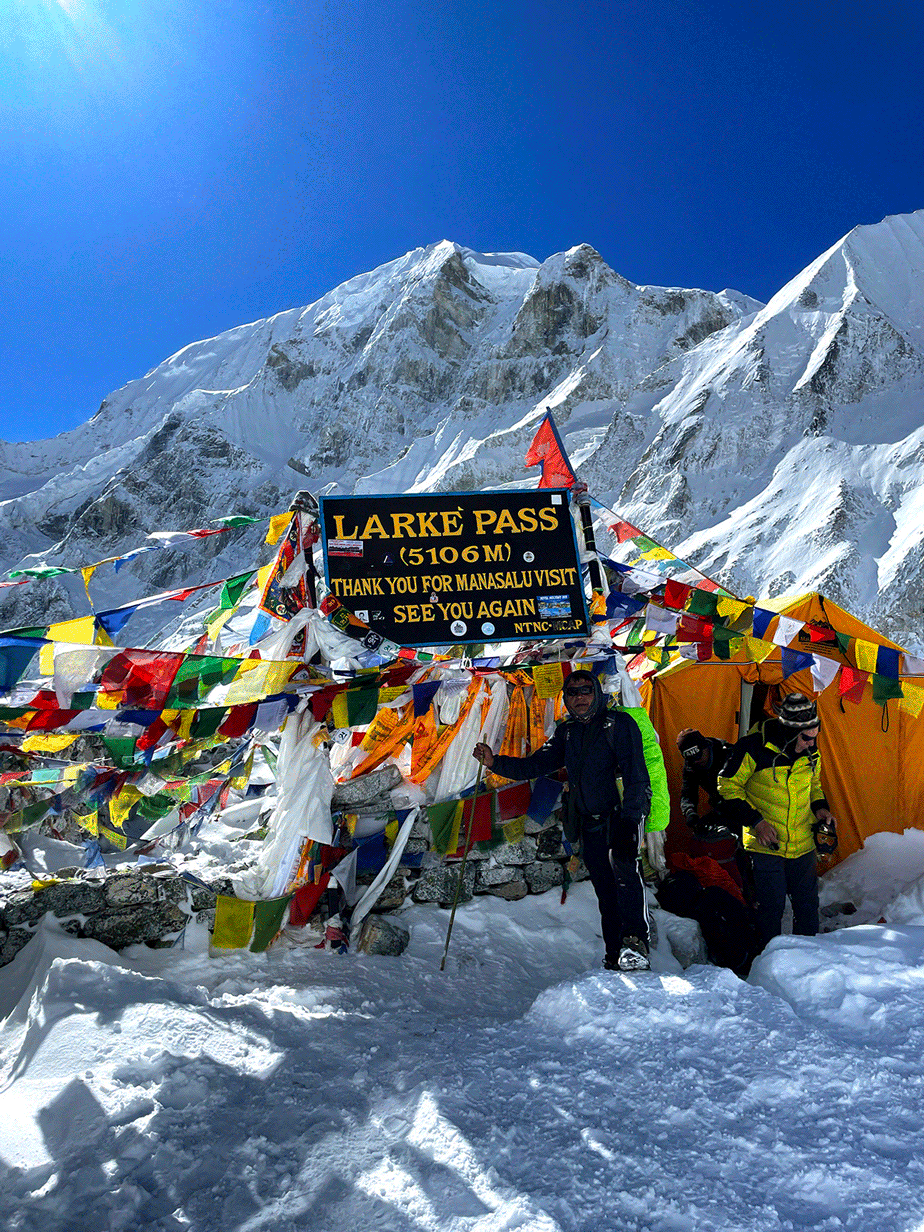
Day 21: Trek to Goa (2,520 to 2,540 m) after admiring yet another magnificent view of the Himalayas at the Bimthang area. Ascend down through an easy-to-walk trail to Goa or Gho (approx. 15 km walk).
Day 22: Trek to Dharapani (1,880 to 1,930 m), trek down to the last mountain stay in Dharapani (approx. 7.5 km walk).
Day 23: Drive back to Kathmandu (approx. 218 km drive).
Day 24: Final departure from Kathmandu, leave for your home country.
5) Manaslu View Trek via lower ridges with Historic village – 5 Days
Day 1: Drive from Kathmandu to Barpak(1,919m), around 6-7 hours drive
Day 2: Trek from Barpak Village, viw points to old Laprak(2,100m) village, trek of 4-5 hours
Day 3: Trek to Khorla(1,690m) via Marlung Kharka(3,200m), 5-6 hours trek
Day 4: Trek from Khorla to Machhakhola (860m), 3-4 hours trek
Day 5: Drive back to Kathmandu
6) Manaslu Circuit Short Trek 6 Days
Day 1: Arrival in Kathmandu and prepare for the trek
Day 2: Helicopter flight to Samagaon(3,500 to 3,560m) and Explore Birendra Lake, Manaslu Base Camp, Short and easy trek to Sama from Shyala. Explore Birendra Lake, Manaslu Base Camp.
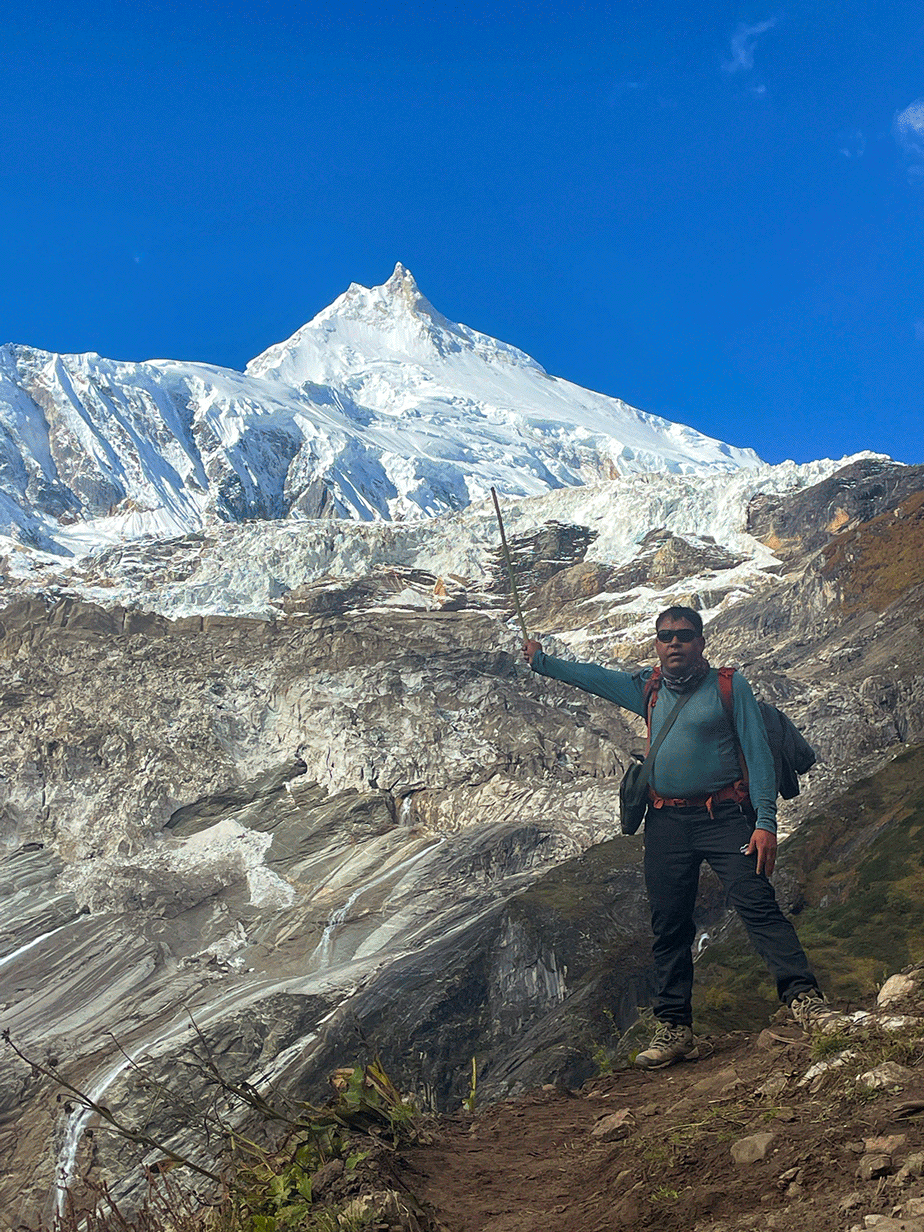
Day 3: Trek to Samdo(3,850 to 3,880m), High Altitude trek to Samdo, for an amazing view of paradise like mountain village of Samdo.
Day 4: Trek to Dharamsala(4,470 to 4,475m) and Rest, Trek through glacial or rocky trail to reach Dharamsala.
Day 5: Trek to Bimthang (3,710 to 3,715m) Via Larkya la or Larke Pass (5,143m), The most awaited day, crossing one of the highest mountain pass in the world.
Day 6: Fly out to Kathmandu and final departure to home.
Manaslu Trek Experience Choices :
1) Unlocking Wellness Through Guided Yoga Therapy
Experience the enchanting beauty of the Himalayas while forging a deep connection with nature. Each moment spent trekking in the Manaslu region is filled with peace, stunning landscapes, and serene energy. Our expert trek leaders, trained in specialized Yoga Therapy, will help travelers fully engage in the mindfulness, wellness, and adventure offerings of the Manaslu trek. Every day, we kick off the morning with a 30-minute mindfulness session followed by another 30 minutes of yoga therapy, and in the evening, we’ll gather again for a final 30-minute yoga session before dinner. The morning sessions focus on mindfulness, awakening, stretching, and strength-building, while the evening is dedicated to relaxation, healing, aiding digestion, and ensuring a restful night’s sleep.
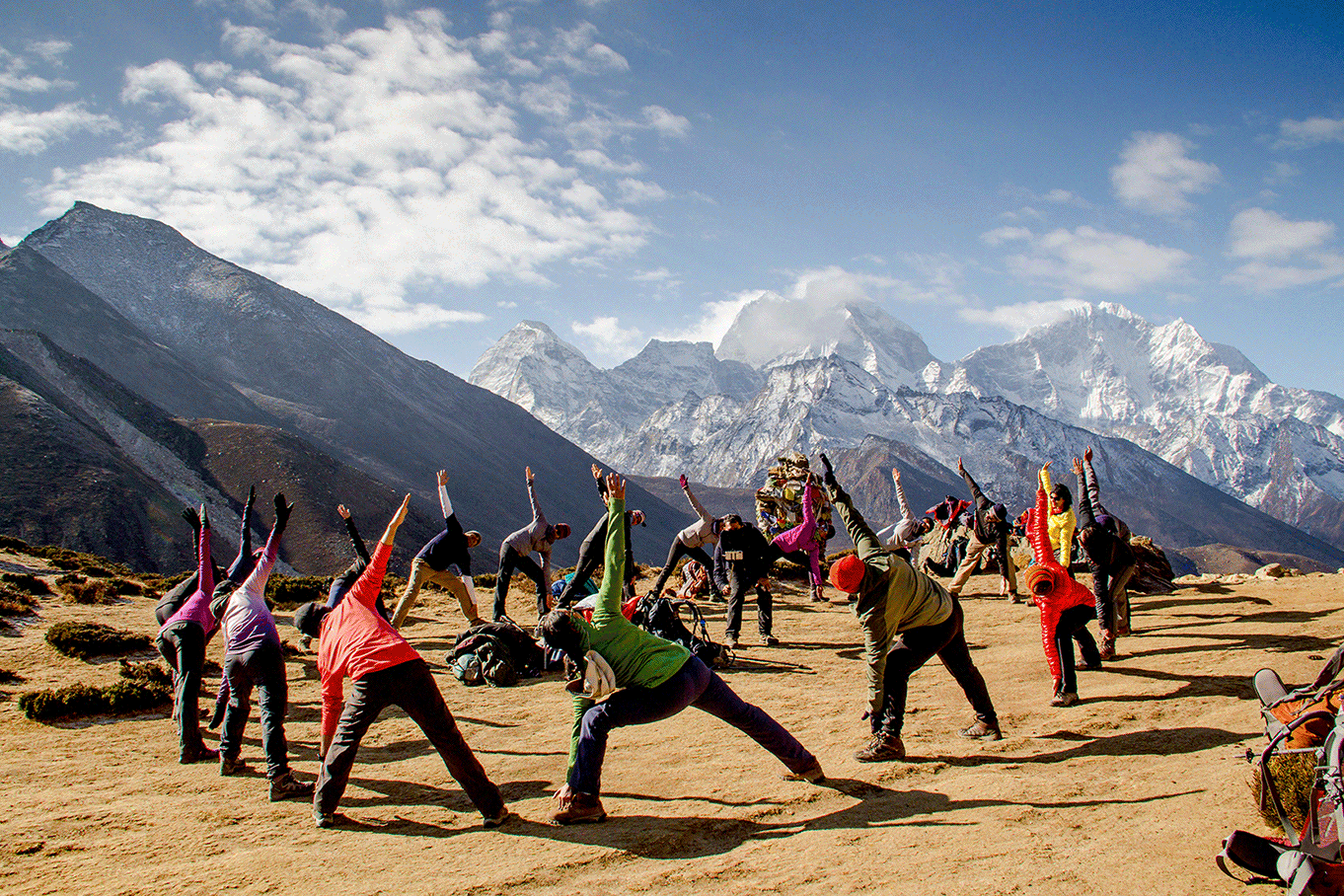
2) Unplug and Discover: Guided Nature Adventures
Discover the breathtaking natural beauty of the Manaslu trek as you immerse yourself in the region’s unique flora and fauna, guided by local experts. This area boasts a rich variety of wildlife and significant medicinal plants. Throughout your journey, you’ll have ample opportunities to explore the intriguing features of the environment and learn from knowledgeable locals. This trip is a wonderful chance to deepen your understanding of the vibrant ecosystem that the Manaslu region has to offer.
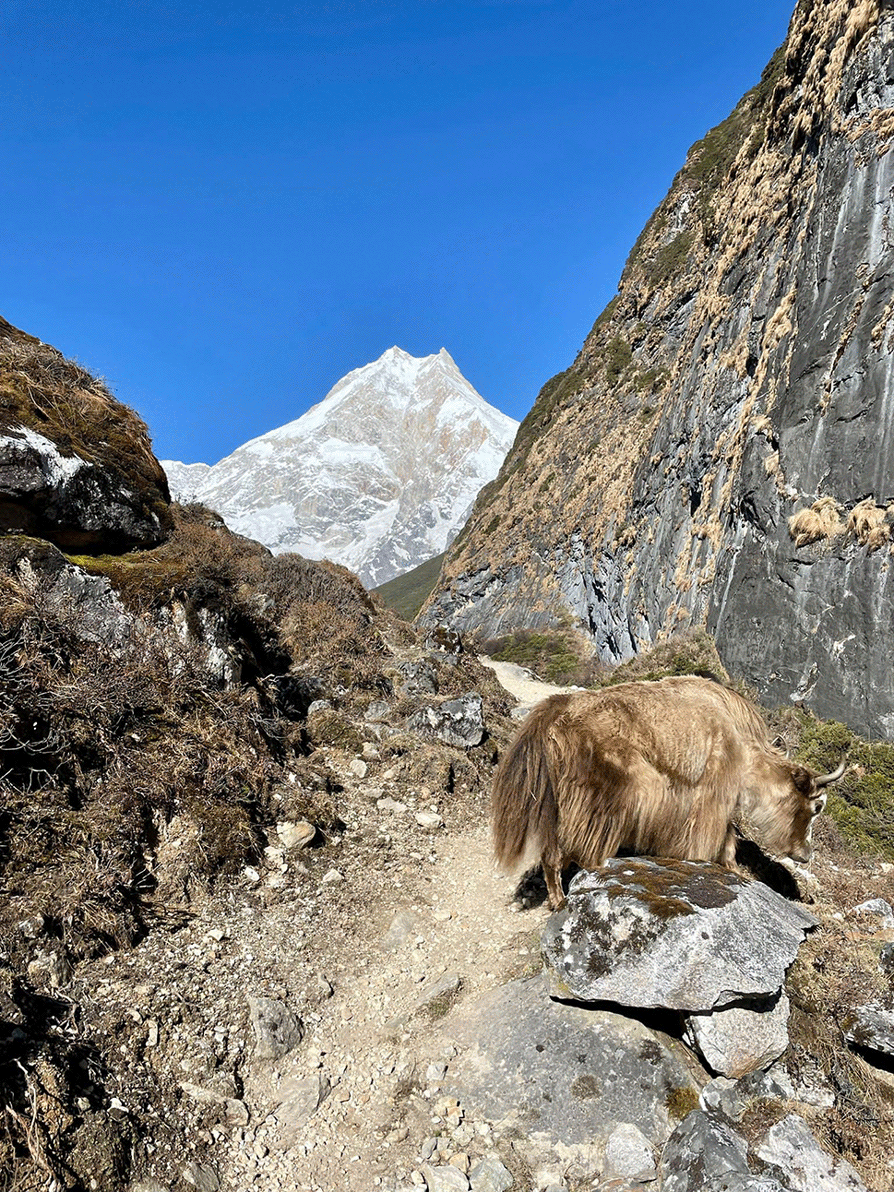
3) Thrill and Adventure Guided
The adventure activities offered during this journey truly elevate the overall experience for travelers. Options such as white-water rafting in the Budigandaki River, trekking along unspoiled trails, canyoning through mountain streams, and rock climbing at various points along the route provide an exciting array of extreme sports. These activities not only inject a dose of adrenaline into the trip but also allow participants to connect more deeply with the stunning natural landscape.
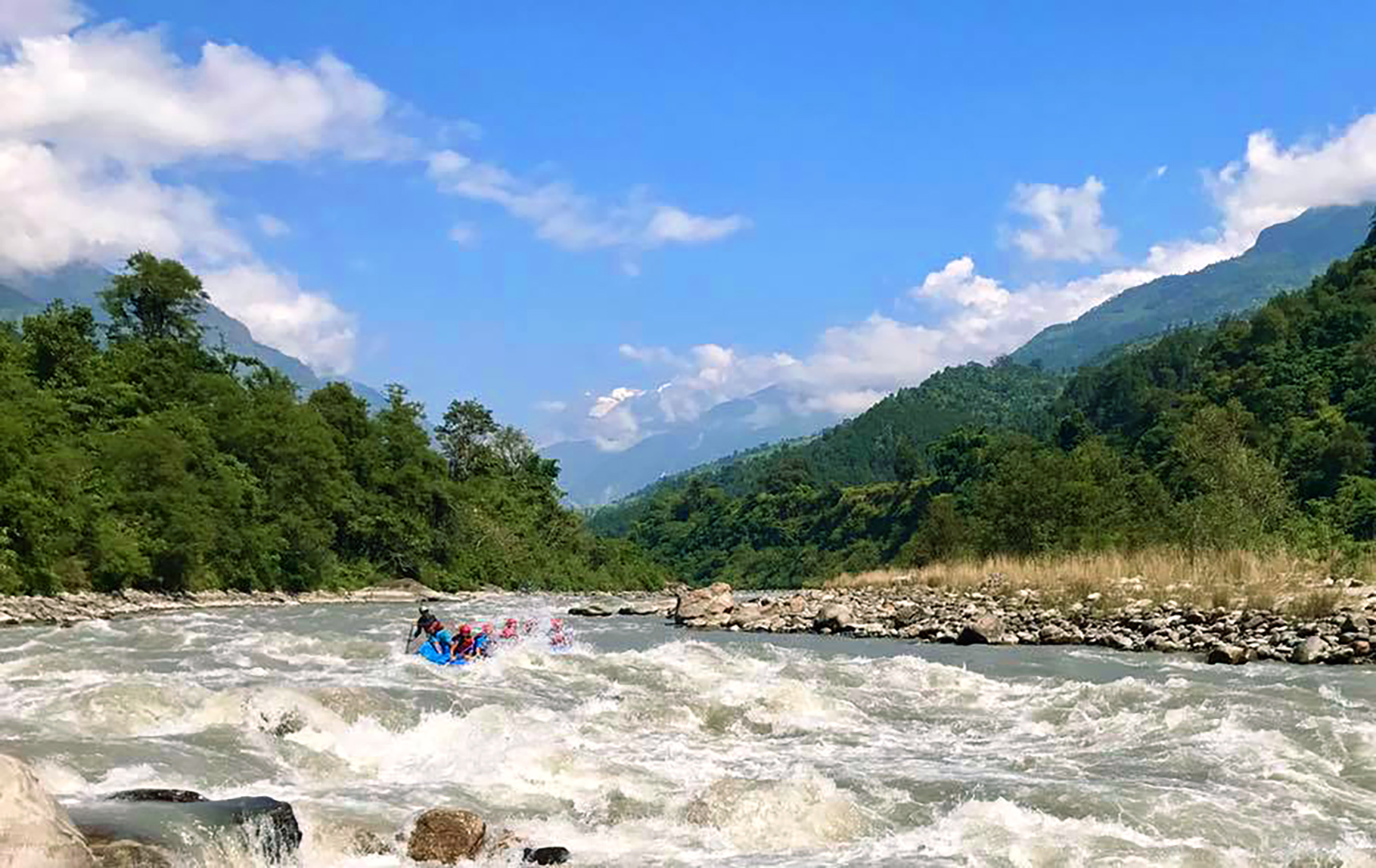
4) Embracing Local Life and Culture
Take the opportunity to dive deep into the fascinating history of the ancient settlements along the Manaslu circuit trekking and Tsum Valley. These extraordinary communities, with roots tracing back to centuries BC, provide a captivating glimpse into a self-sustaining and independent way of life that is sure to inspire and enrich your journey. Embrace the unique lessons that await you on this unforgettable adventure.
5) Trailblaze: Forge Your Path to Unseen Adventures
Join us on an adventurous trek, where your guide and local farmers will lead you along untouched trails through lush forests and rugged terrains. Our journey will take you over rocky cliffs as we make our way to various destinations. We will set up camp for food and accommodation, relying on local farmers’ huts and well-trodden paths throughout the trip. Embrace the experience at your own pace and enjoy the beauty of nature!
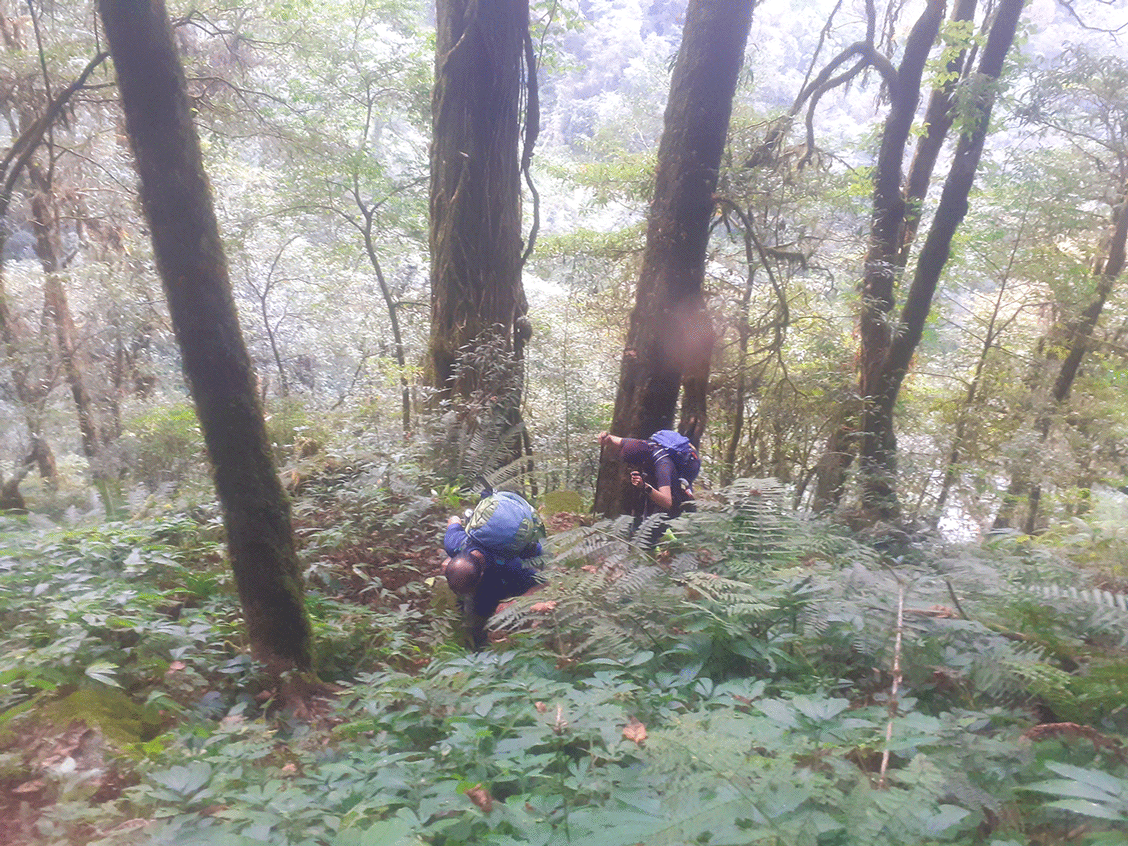
7) Farm to You: Discover Local Bounty on the Go
Imagine a world where your home roams as freely as the cattle you tend to. Mobile cattle farming transforms the way you think about agriculture, allowing you to pack up your entire farm setup and relocate to new pastures whenever the environment calls for it. Picture yourself enjoying delicious, locally sourced organic meals and cozying up in rustic huts that sit side by side with your domesticated herd. It’s a lifestyle deeply connected to nature, where every day brings a fresh adventure and a new flavor of the land.
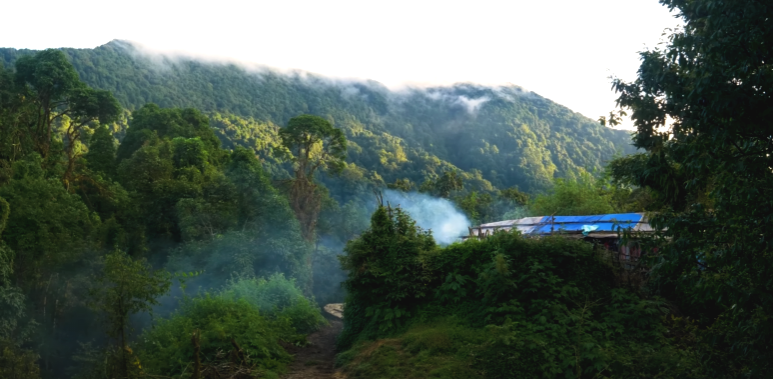
Mastering Manaslu: Essential Tips for a Remarkable Trekking Adventure
1) Your Safety
When embarking on a Himalayan trip, such as the Manaslu trek, the primary concern for operators is the safety of their customers. It is essential to ensure that your service provider offers high-altitude first aid supplies as part of their safety measures. Additionally, having a trained trip leader is crucial for maintaining a safe environment during your journey. Safety encompasses various aspects, including medical and physical considerations, which are vital throughout the trip.
Moreover, the preparedness of travelers plays a significant role in ensuring safety on such adventures. More experienced hikers often contribute to a safer overall experience, as they are better equipped to handle the challenges that may arise in high-altitude settings. Therefore, investing in safety resources and having experienced individuals on your journey can greatly enhance the overall safety of your trip.
2) Your Food
When you set out on trekking adventures in the Himalayas, like the Manaslu Circuit, it’s crucial to pay attention to your food choices. Given the remote setting, ingredients for meals are often shipped from long distances, which can increase the chances of food adulteration. To reduce health risks and improve your experience, try to indulge in the local cuisine rather than opting for modern or fancy alternatives. Eating the food which locals prefer daily can help you acclimate to your surroundings more quickly, ultimately leading to a more enjoyable and stress-free journey.
3) Your Accommodation
Accommodation options during the trek are somewhat limited at each stop. While the facilities tend to be fairly consistent, the quality of service can differ depending on the individual owners and operators of the establishments. Having a knowledgeable trek leader who has frequented these locations can be invaluable, as they can offer insights on which accommodations are the most sought after, greatly enhancing your overall experience. Furthermore, our guide is well-prepared with strategies to boost your comfort and ensure you make the most of the available resources, helping you enjoy your stay to the fullest.
4) Your Crew
When it comes to putting together the perfect team for your adventure in the breathtaking Manaslu region, there are a few essential factors to consider when choosing your crew members. First and foremost, assess their experience; a guide who has successfully navigated the trails of Manaslu will bring invaluable local knowledge and insights that can truly enrich your trek.
Next, make sure that your selected guide has a valid government-issued license. This certification not only signifies their professionalism and commitment to safety standards but also confirms that they have undergone the necessary training to lead groups through this challenging terrain.
Finally, take note of any additional certifications they might have beyond the basic license. Qualifications in first aid, wilderness survival, or specific trekking skills can provide added peace of mind, ensuring your guide is well-equipped to handle the unpredictable nature of Himalayan trekking.
By thoughtfully considering these three crucial elements—experience, licensing, and extra qualifications—you’ll be well on your way to enhancing your overall trekking experience in the magnificent Himalayas. Meet Himalayan Adventure Therapy Team.
Manaslu Trek Service Options :
1) Luxury in my nest
Your journey will be thoughtfully curated to maximize your enjoyment, featuring exquisite dining, lavish accommodations, and smooth transportation options. We have assembled a team of dedicated and highly skilled professionals who will be with you every step of the way, ensuring you receive outstanding service at all times. Each aspect of your itinerary will be customized to reflect your individual tastes and requirements, delivering a truly personalized experience for every traveler.
2) Comfortable for me
This option offers additional servicemen and extra supplies that go beyond the standard provisions typically provided during the Manaslu Circuit Trek. Meals will be thoughtfully prepared to showcase the delightful dishes commonly found in local hotels. As you trek through this breathtaking landscape, you can look forward to a varied menu that caters to different preferences, ensuring a satisfying dining experience surrounded by stunning scenery.
3) Standard is fine
You will receive all standard facilities currently available in the standard trekking package. Each group will be accompanied by a qualified trek leader, ensuring expert guidance and support throughout your journey. Additionally, the service staff will maintain a standard ratio of one porter for every two trekkers, providing assistance with your equipment and ensuring a smooth and enjoyable trekking experience.
4) I want it cheap
To cut down on the overall cost of your trip, consider opting for budget-friendly options. This might mean choosing less experienced trek leaders who can offer lower rates while still providing good guidance. Moreover, you can save money by planning your own meals and selecting more affordable accommodations, like guesthouses or hostels, rather than spending on pricier hotels. By picking these economical alternatives, you’ll be able to significantly slash your expenses while still enjoying a rewarding trekking experience.